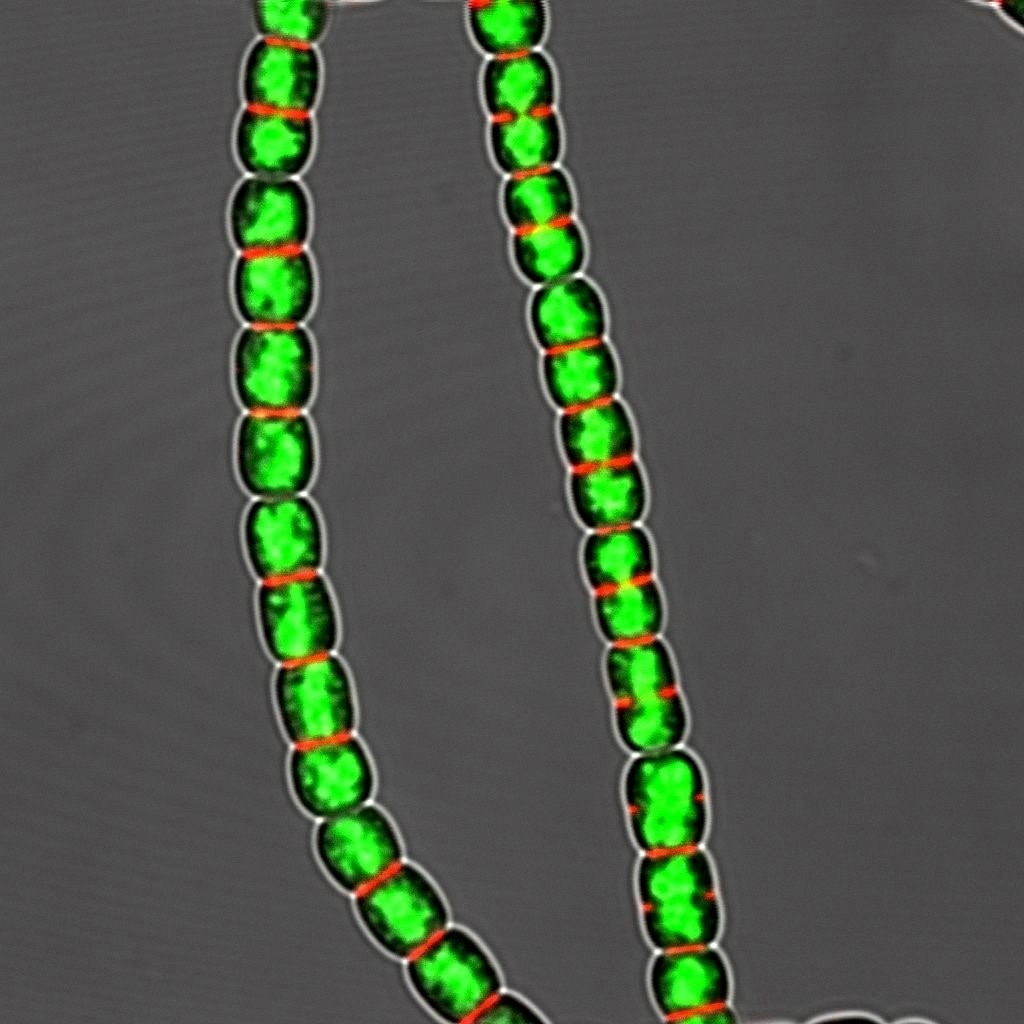Cyanobacteria are considered to be the earliest oxygenic photosynthetic organisms present on Earth, and they have played crucial roles in the progress of the environment and life on the planet. Today, cyanobacteria are still found extravagantly in several ecological niches.
 Fluorescent image of the filamentous cyanobacterium Anabaena PCC 7120. Image Credit: IHB.
Fluorescent image of the filamentous cyanobacterium Anabaena PCC 7120. Image Credit: IHB.
In a few waterbodies under eutrophic conditions, the high proliferation of cyanobacteria might produce risky water blooms that are detrimental to the surrounding and human health. The cyanobacterial cells’ reproduction relies on symmetric cell division to generate two daughter cells of equal size for every cell cycle. But how this division symmetry has been obtained is yet to be known.
In recent times, the research team headed by Professor Chengcai Zhang from the Institute of Hydrobiology (IHB) of the Chinese Academy of Sciences has reported the presence of a three-dimensional control system available for symmetric cell division in the cyanobacterium Anabaena sp. PCC 7120 (Anabaena). The study was reported online in the PNAS Nexus journal.
Anabaena survives in a multicellular form consisting of chains of cells growing in one dimension, thereby denoting that both the placement and the angle of the division planes are regulated in every single cell for such a one-dimensional growth mode together with the long axis.
Professor Zhang’s group reported in a study published in PNAS in 2022 that a protease HetF controlled cell division by splitting a cell division inhibitor PatU3. But the function of PatU3 in cell division is yet to be understood.
In this research, by statistical analysis, the scientists discovered that the inactivation of patU3 and the preserved minC and minD genes impacted cell division in a way that it might happen at any place over a 360° angle in three dimensions throughout various cellular sections. This helps produce both cells with irregular sizes and branching filaments.
Depending on such outcomes, the scientists suggested that both the PatU3 and Min systems hinder alternative division sites at the polar regions of a cell with PatU3 acting in subregions next to the cell center, while MinCD is closer to cell poles.
Besides they discovered that PatU3 limits the angle of the division planes to 90° comparative to the long cell axis, all in parallel in varied cells, generating straight filament. The synergy of these two systems guarantees symmetric cell division to generate equal-sized daughter cells. Such a three-dimensional control system has been hardly reported in bacteria.
A new direction has been provided for this study for learning the localization mechanism of cell division sites in filamentous cyanobacteria and adds up to the knowledge of the process of cyanobacteria proliferation and also its control measure.
Source:
Journal reference:
Liu, J., et al. (2022) Three-dimensional coordination of cell-division site positioning in a filamentous cyanobacterium. PNAS Nexus. doi.org/10.1093/pnasnexus/pgac307